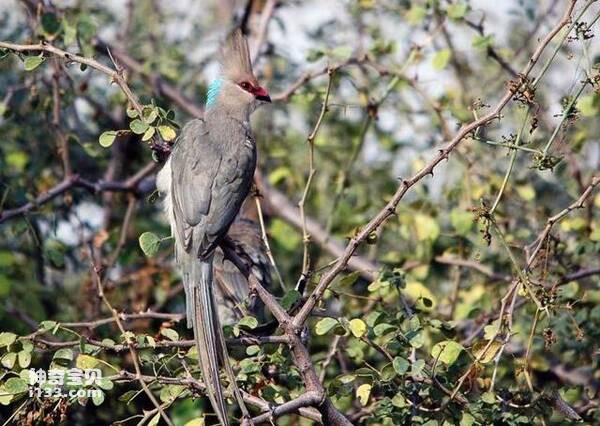Urocolius macrourus
IUCN
LCBasic Information
Scientific classification
- name:Urocolius macrourus
- Scientific Name:Urocolius macrourus,Blue-naped Mousebird
- Outline:Climbing birds
- Family:
Vital signs
- length:About 35 cm
- Weight:No textual research information is available
- lifetime:No textual research information is available
Feature
The head feathers are soft, the neck feathers are blue, and the tail feathers are long and thin
Distribution and Habitat
It is widely distributed in Benin, Burkina Faso, Burundi, Cameroon, Chad, Djibouti, Democratic Republic of Eritrea, Chad, Congo, Ethiopia, Guinea-Bissau, Kenya, Mali, Mauritania, Niger, Nigeria, Rwanda, Senegal, Somalia, Sudan, Tanzania, Uganda and other countries, as well as in Gambia.
The blue pillow mousebird usually lives in thorny undergrowth.
Appearance
The body length is about 35cm, the head feathers are soft, the neck feathers are blue; The tail feathers are thin and long, and the whole body appears fat, gray or brown; The beak and eyes are very small and red-black. Unlike the feet of other four-toed birds, its toes are extended forward so that it can grasp branches when perching; The outer toe is rolled outward to make it more agile when walking and jumping.
Details
The Blue-naped Mousebird (Urocolius macrourus) has three subspecies.

The blue pillowbird usually flaps its wings for short, horizontal flight, and sometimes glides. Often climb to the height to inspect the plants around, staple food green leaves, but also eat nectar, fruits and seeds, they are very greedy, large food and slow digestion, so the long abdomen into a bulging pot, so they used to stretch their legs into shoulder width, "hanging" on the tree. The birds often roost in close groups, preening each other and building skirt nests. Flight and roosting often produce soft, two-syllable chirps.
Listed in the International Union for Conservation of Nature (IUCN) ver 3.1 2009 Endangered Species - Low Risk (LC).
Protect wild animals and eliminate wild meat.
Maintaining ecological balance is everyone's responsibility!








